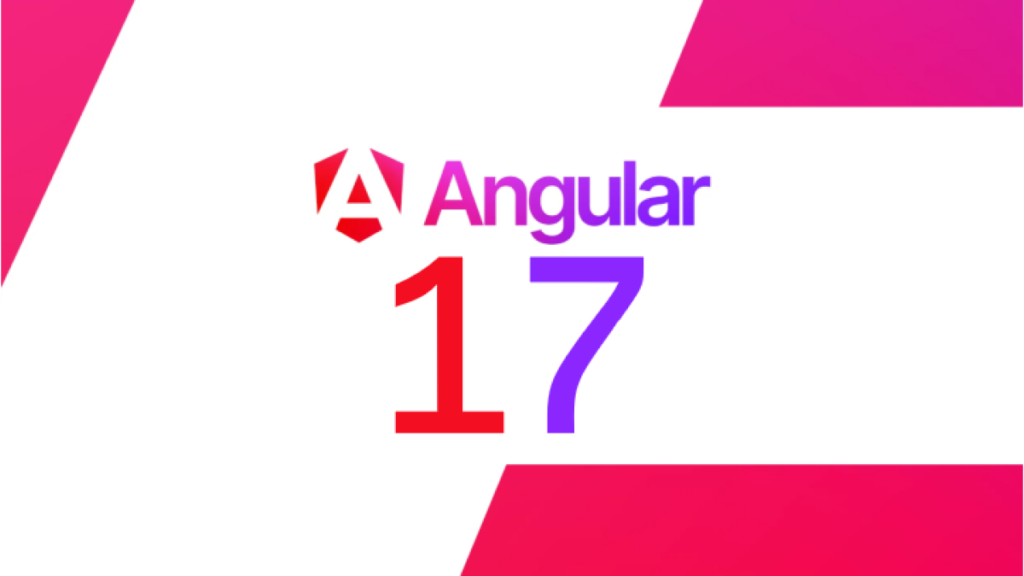
Angular 17 Update: New Features, Installation Guide, and More!
The Angular framework keeps getting better with every major release. Angular 17, the next big update, promises to bring exciting new features and enhancements to make the development experience even more productive and enjoyable. The Angular team has continuously tried to address the feedback and needs of the developer community, which has resulted in these significant updates in Angular 17.
Today’s blog post covers the release of Angular 17 in November, outlining newly added features and how they can enhance your application’s functionality.
Angular 17 – Introduction!
Angular 17 introduces Standalone Components and Signals as a part of its new movement. With Angular 17, you can expect an improved Angular Renaissance. It has a new syntax for control flow, better support for lazy loading of page components, and improved support for Server-Side Rendering (SSR). Additionally, the CLI now relies on ESBuild, significantly enhancing the build process.
In the upcoming days, Angular v17 will be released with enhancements such as deferred views, built-in control flow, SSR improvements, and support for view transitions API.
Angular 17 Latest Features: What to Expect!
Angular 17 release brought many new exciting features, updates, and improvements. Here’s the list:
TypeScript 5.2 Support
The latest version of TypeScript offers several useful features to optimize AngularJS performance. Here’s how it enhances the Angular-based App performance:
- Quick Recursive Type Checking – If you use code or libraries with recursive types, TypeScript 5.2 can provide a significant performance boost of 33%, according to tests.
- New Declarative Control Flow Syntax – The new control flow syntax in Angular 17, similar to JavaScript and Python, simplifies coding. You can use the following steps to utilize the new declarative control flow syntax:
- First, import the @angular/core module.
- Add @ prefix to name control flow directive. For instance, you can use @if in place of ngIf.
- You can use the @ directive to wrap the content you want to display conditionally.
- Evaluate the condition by passing an expression to the @ directive. The content is displayed only if the expression is evaluated to be true.
No Missing Commas
Typescript 5.2 now helps coders by automatically adding commas to object property lists when forgotten.
Build-in Control Flow Automatic Migration
If you want to migrate your code to the new control flow syntax automatically, there’s a schematic available in the @angular/core package:
ng g @angular/core:control-flow
View Transition API Opt-in Support
Multiple browsers, such as Chrome, Opera, Chrome Android, Edge, Samsung Internet, and WebView Android, support the View Transition API. To use this feature, you usually have to combine CSS and JS.
However, with the release of Android 17, a new opt-in-based support is available. This makes using the View Transition API easier without the need for complex code.
Lazy Loaded Images Slow Down Page Render Error
When developing web applications, you can use NgOptimizedImages to manage images. This tool can detect which images are essential for the initial app loading. If you don’t specify these images as a top priority, they will load slowly, resulting in a longer loading time for the first app launch.
Setup Routes for Unique Testing
You can now use provideRouter and RouterModule.forRoot to set up routes for testing instead of using setupTestingRouter. The interesting fact is that few Router properties have now moved to these setup Routes, such as:
- paramsInheritanceStrategy
- urlUpdateStrategy
- canceledNavigationResolution
- malformedUriErrorHandler ( moved to UrlSerializer.parse)
- titleStrategy
- urlHandlingStrategy
CSS Automatic Removal
One of the features of Angular 17 is the automatic removal of CSS from the DOM upon component destruction. This ensures smooth application functioning and prevents issues such as RAM overheating.
Also Read: Angular 17: The Latest Advancements In Web Development
Angular 17 Additional Updates
- The newest edition of Angular, version 17, offers improved support for internationalization and accessibility.
- Custom element bindings and element providers now have extended support.
- The command “ng g interceptor” generates interceptors that can be used for various purposes in Angular applications.
- When using signals in templates, a diagnostic now warns if the getter call is missing (e.g. {{ products }} instead of {{ products() }}).
How to Install Angular 17?
If you are prone to previous Angular versions, then it’s a cakewalk for you. You can install the latest Angular 17 version using the npm (Node Package Manager).
All you have to do is execute the following command line in the CLI (Command Line Index):
npm install –global @angular/cli@next
This command line will comprehensively help you install Angular CLI’s latest version on your system.
Deploy Angular 17 with Meizsoft Solutions!
The Angular Team at Google has released exciting updates and enhancements in Angular 17 that will thrill developers and business owners.
Angular 17 has a great feature of deferred loading that enables you to load less important pages later. The Angular team constantly strives to enhance and push the boundaries of achievable goals, ensuring that better updates and improvements are on the horizon.
Whether developers or business owners, the time has come for you to switch and implement Angular 17 in your next project. Hire Angular Developers from a top-rated Angular Development Agency to unlock the full potential of this robust front-end framework.


